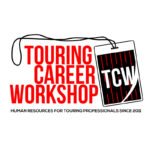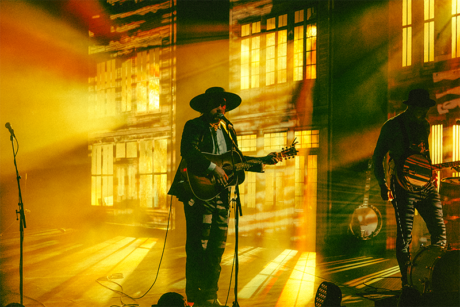
Despite their band name—The Dead South—they are from Saskatchewan, Canada and play bluegrass with a rock edge. This past spring they finished up a North American leg prior to heading down under to play Australia and New Zealand. They will then be back out in the States as well as touring Europe. The design trio of John Frattalone, Jason Hartwyk, and Ben Silverstein collectively collaborated on the production and lighting design for the tour. The three took some time to speak about creating big scenic and lighting looks that tour easily while fully supporting this up-and-coming group.
How do the three of you split your duties?
John Frattalone: Officially, we’re a three person co-production design team. We all collaborated and share equal credit for the overall concept, vision, and design. I focused on the scenic design and fabrication management. Ben focused on the lighting design, Ben and Jason programmed the show, and Jason took it out on tour.
What was the overall design aesthetic?
Jason Hartwyk: We went with an 1800s vibe. The set is a little frontier town. John did a great job with the illusion of the buildings and the depth of field. It’s a clean stage, which makes for a very cool looking show. We all wanted to hide the lighting fixtures. We were all tired of seeing lights everywhere on stage. At the same time, we still needed the programming and lighting to have a very high-energy, despite it being bluegrass; it’s more rock than bluegrass.
JF: The band describes themselves as ‘Blackgrass’ which is the dark arts of bluegrass—whiskey, gambling, murder, betrayal. Their music lends itself to great storytelling.
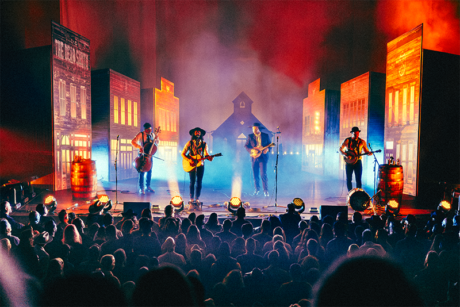
The set is both built scenery and a drop, talk about that.
JF: The design started with a cut drop of the church. The band is big overseas, particularly in Australia and we wanted something that was easy to tour. The drop can be checked luggage. We did that with Marilyn Moss at Sew What?, who deserves a shout out. Then we wanted to create three-dimensional depth, to extend the set further downstage, and we had all agreed on hiding the lighting fixtures. We looked at making the other buildings with drops or using stands to hold up scenic pieces. Travis Shaffer, the Head of Scenic Fabrication department at Upstaging and our Project Manager, Andrew Steele, had some great suggestions on how to make the set easily tourable. They suggested aluminum welded frames with matte vinyl graphic ‘stickers’ applied to clear polycarbonate. They used laser cutouts for the negative space. I’d also give a shout out to Upstaging’s Graphics Manager, Johnny Hott, who dealt with all the graphics files that were printed out for the building panels. This scenery idea was a really big thing that they brought to the table; they were safe, beautiful, tourable, and on-time and budget. The panels are thin, break down easily for shipping and use coffin locks, bolts, and some loose-pin hinges for the varying angles of the walls.
JH: It takes 45-minutes to set up the buildings and 45-minutes for the lighting set up. My tech, David Brenneman, is the one building it every day and orchestrating the stagehands and crew chiefing the process, while I’m getting the front of house built and stuff like that. The buildings can scale up and down depending on the venue size. And the cut drop of the church works on its own, when we can’t get the ‘town’ overseas.
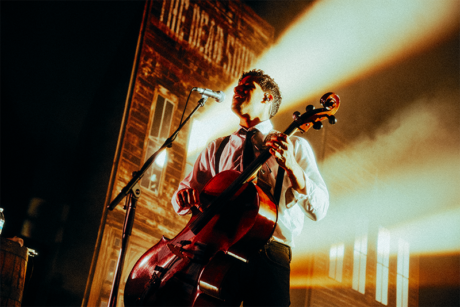
Tell me about the lighting design.
Ben Silverstein: It’s all a ground package. We worked backwards, reactive to the scenic design. We had to figure out how to push light smartly through the windows while hiding all the lights. Also, how to make the exposed lights look good for the overseas tour dates with only the church drop and no buildings to hide the lights. We all came up with [Tyler] GT trusses on skis at three different tiers to give us all those levels and help provide as much lighting as possible. The only lights you see are some of the sidelights and downstage lights for the band to help light the facades. We do a lot of shadow play, which looks really cool in the show.
What were some of your key gear choices?
JH: ACME Lyras, [GLP] JDC1s, along with X4 Bar 20s for the scrim upstage as well as inside the buildings. We’re using [CHAUVET] Strike 1s, which gives a nice incandescent feel behind the windows as well.
JF: We had ACME Thunderbolts for the gutters between building to light the alleyways. Upstaging had some great fixtures, and we had some budget constraints. They found the best solutions to pull off all the different looks we wanted to achieve.
It sounds like Upstaging was a good vendor choice for this tour.
BS: Their support was fantastic. The fact that they do both the lighting and the scenic, that alone made the difference. They looked at how the scenic flat sat next to the truss and designed a bracket that we can attach from the truss through the framing for the panels. While we were at Upstaging’s scenic shop, we could look at different lights that maybe would work better. It was a perfect relationship.
JF: Scenic being in the same building brings enormous value. We have a long history with Upstaging, and this was just a natural fit. We were trying to reach for this thing, but we couldn’t do it unless they felt we could.
What would you call out about this show?
JH: I personally like how theatrical it is. I like the hidden sources. There are a couple of really moody looks during some acoustical moments that are quiet and lend themselves to be really, really pretty, lighting-wise. I’m proud of some of those moments. But ideally, I love the fact that that I can’t see the lights. It’s so refreshing to me, and I think it’s refreshing to a lot of people.
How would you sum up your experience with The Dead South?
BS: They put on such a great show. With the design, it’s not every day we get to do something so specific. With scenery, it’s so fun because you’re making a choice and you’re committing to it. It’s not like with lighting. You can do different lighting looks, but if you have a forced perspective town as a set, that’s not going away. I feel like, at least in our experience, we don’t get to do that kind of a thing with every band. Having the opportunity to do it with The Dead South was so fitting, and it just really was a perfect blend of the band and the design.
JF: This scenic design wouldn’t really work as well with a traditional band with a drummer further back breaking the illusion. The fact that this band is four guys who all basically stand downstage makes it work. It was a perfect stars-aligning moment of having the right band, with the right staging, at the right time, to support the right album. And they were willing to take a leap.
JH: I really think they’re at the cusp of growing in recognition, popularity, and reputation. The new album is great, and it showcases a lot of their talents. And they’re just a really great group of guys. Great human beings to work with, and we thank them for putting their trust in us to pull this design off and bring this vision to life.
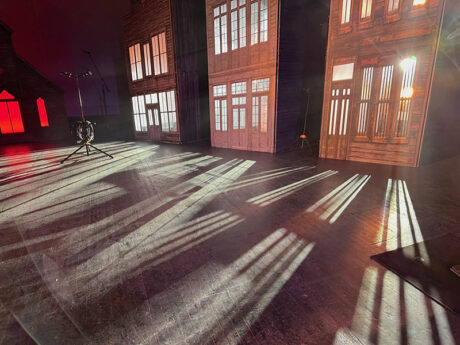
VENDOR VIEW
Josh Wagner
Project Manager, Upstaging, Inc.
On the solutions Upstaging provided:
We had to come up with a way of lighting the scenic building elements that our fabrication team put together. We spent several hours with Ben trying different fixtures and angles to come up with a way to get it just right. After that it was a matter of building the show and getting it into a touring package. Josh “Cuddles” Wilson [Upstaging Project Lead] did a great job heading that up and working with Hunter IntVeld [Upstaging In-House Lighting Tech]. They were able to come up with unique solutions to get the fixtures set up to do everything that Ben and Jason needed.
On supporting Designers Jason Hartwyk and Ben Silverstein:
I have worked with Ben a few times in the last couple of years, and I always have a blast getting from the design to the finished product with him. This is the first time working with Jason for me, but he was equally easy to get along with. Working with them together on this system was about as good as it gets. They were able to communicate the design and their needs thoroughly so that when they came in to program, they walked into a rig needing very few changes.
On why Upstaging was the right vendor:
Upstaging were able to add in the one stop shop providing both the scenic and lighting. They knew coming to us that quality and attention to detail would be automatic for all the elements we were providing the tour.


